RDP
Use the RDP mode to run the native Microsoft Remote Desktop Connection client from within Remote Utilities and connect to a remote computer via the RDP protocol.
If the remote PC isn't directly accessible by its IP address, you can use the Internet ID connection as transport for RDP connection. Learn more about RDP-over-ID.
Turn on Remote Desktop
- On the remote computer, open Windows Settings➝System➝Remote Desktop.
- Click the Enable Remote Desktop slider:
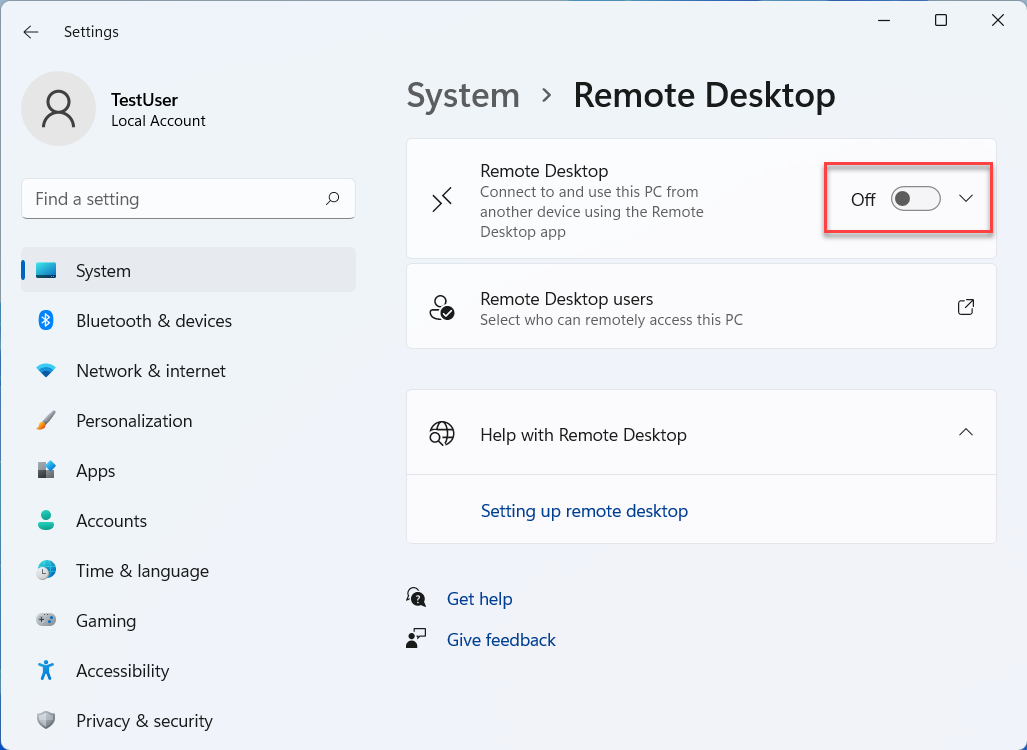
- In the next window click Confirm:
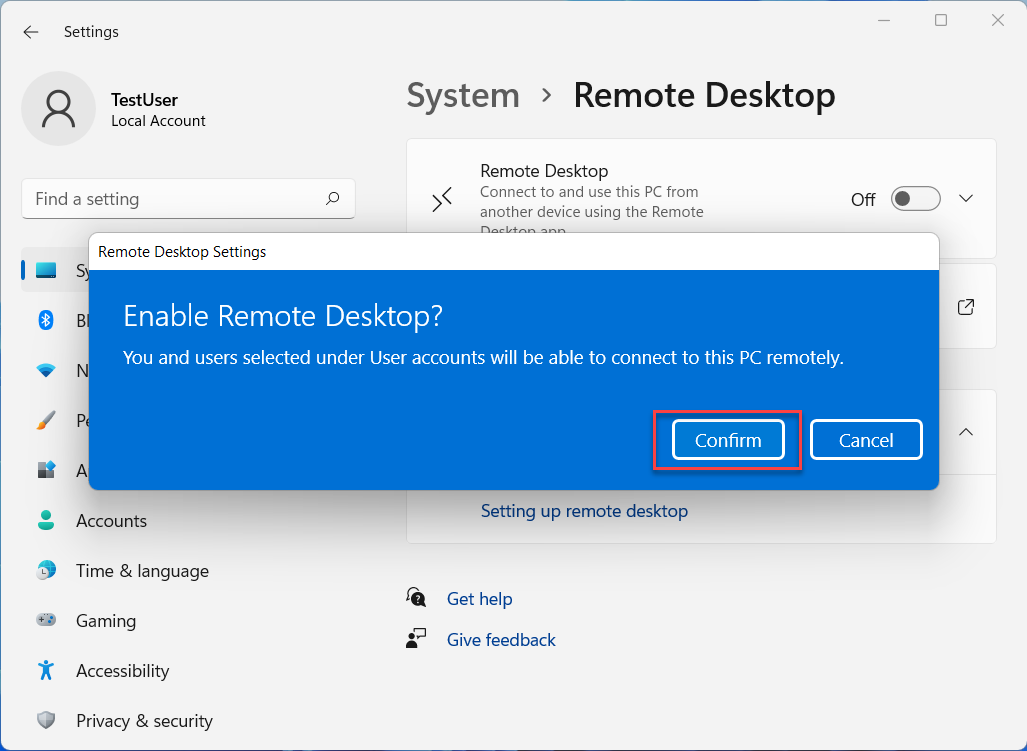
- Make sure the Enable Remote Desktop is in the ON position and close the settings window.
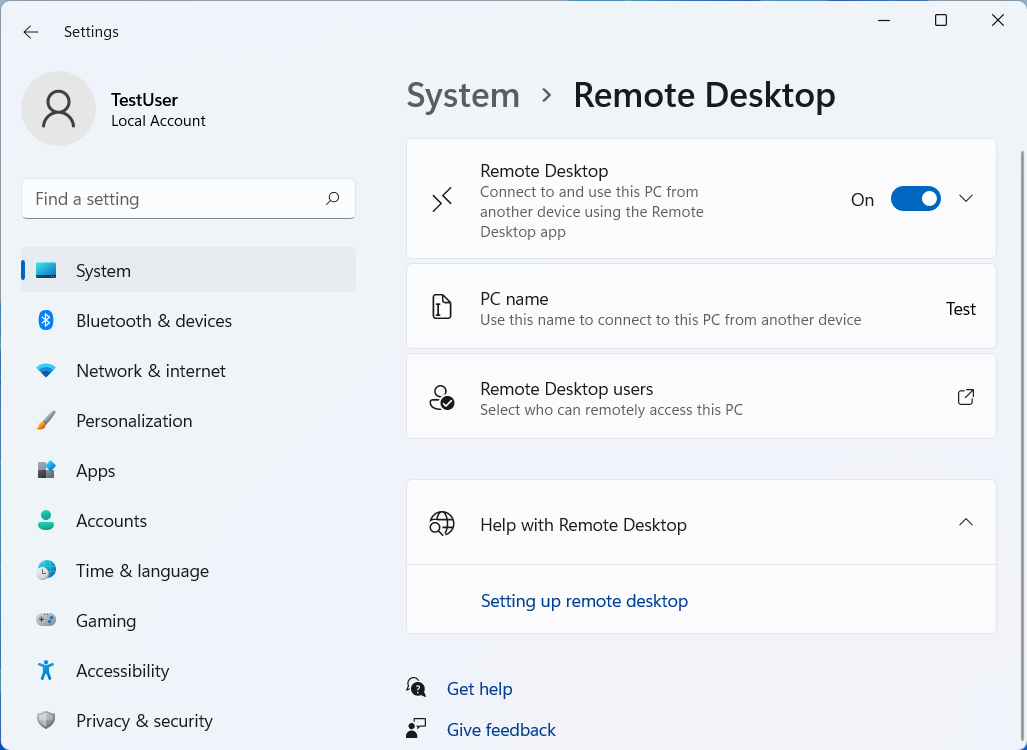
You only need to enable Remote Desktop if you use the RDP connection mode. For Remote Utilities own connection modes (such as Full Control, File Transfer etc.) it isn't necessary to enable Remote Desktop.
Start RDP session
- On the General tab select RDP and double-click a connection in your address book:
Hint: Use the scrollbar on the right to reveal additional connection mode icons.
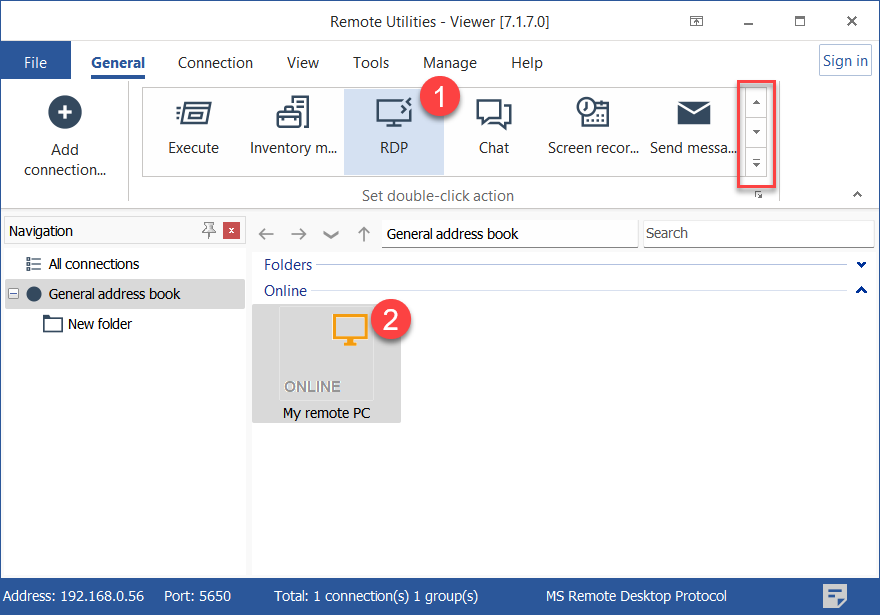
- Enter your Windows access credentials and click OK:
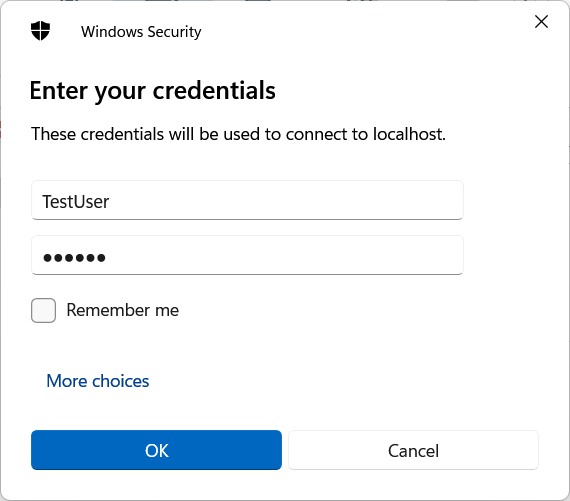
- A new RDP session will start in the native Microsoft RDP client window:
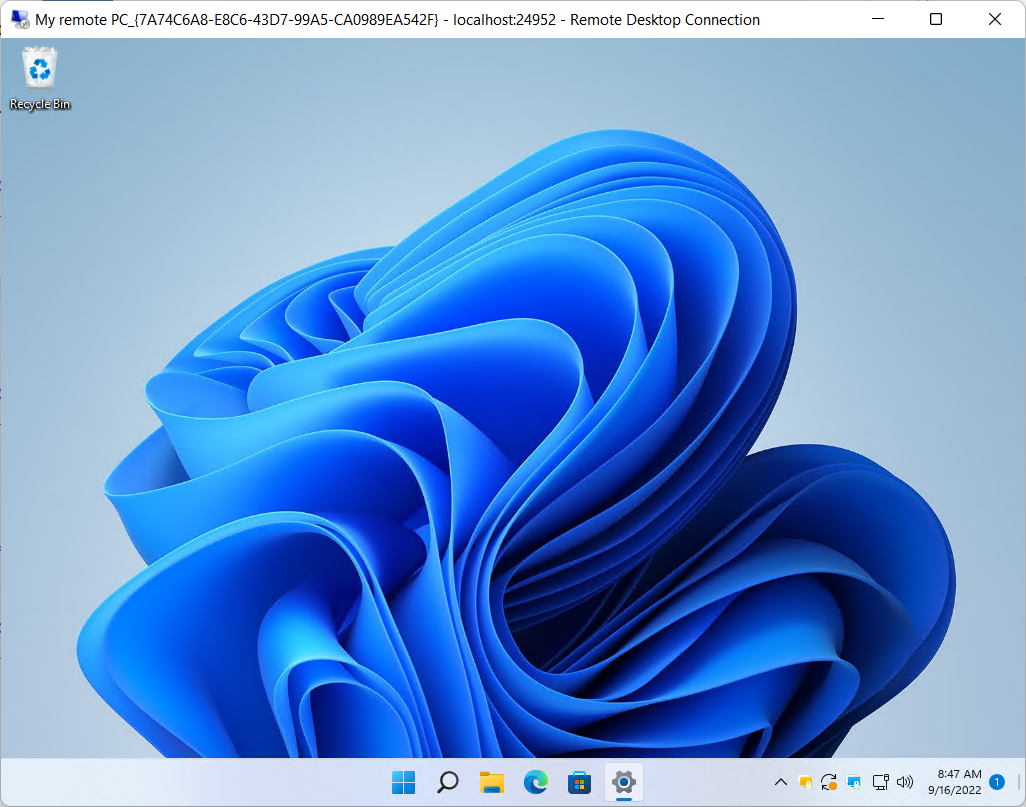
Edit RDP connection properties
- Right-click on the connection icon in the address book and select Properties.
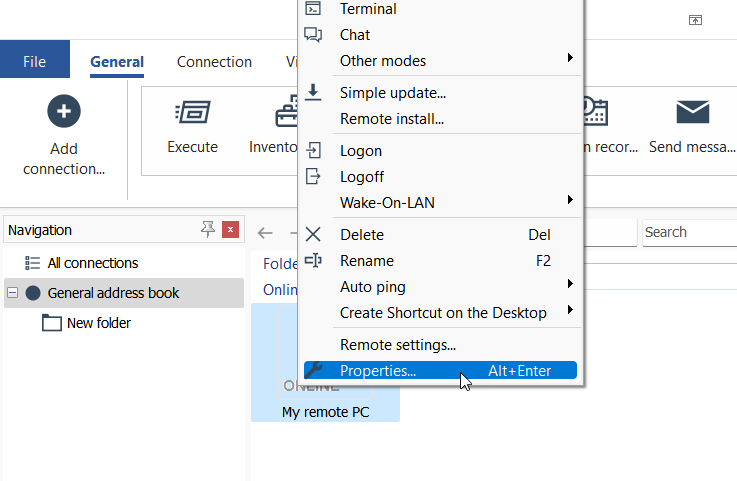
- Go to RDP and click Configure.
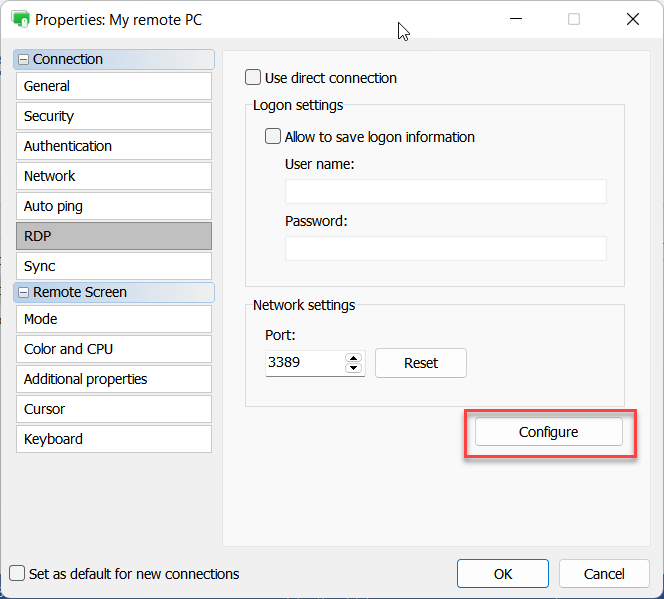
- The native Microsoft RDC client will open. You can browse through its tabs to adjust the necessary settings.
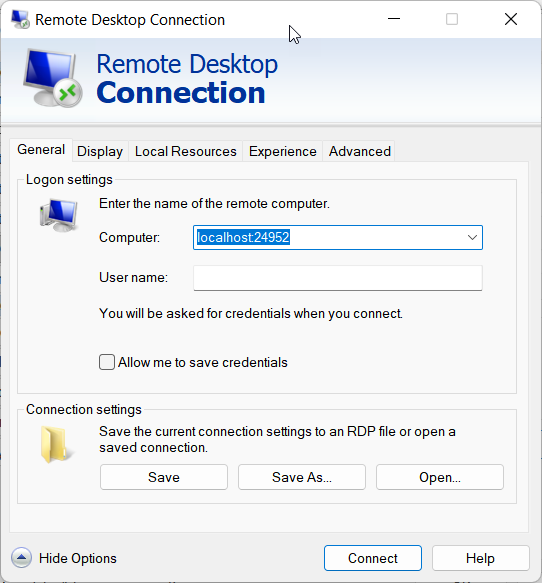
See also Editing connections for more information.